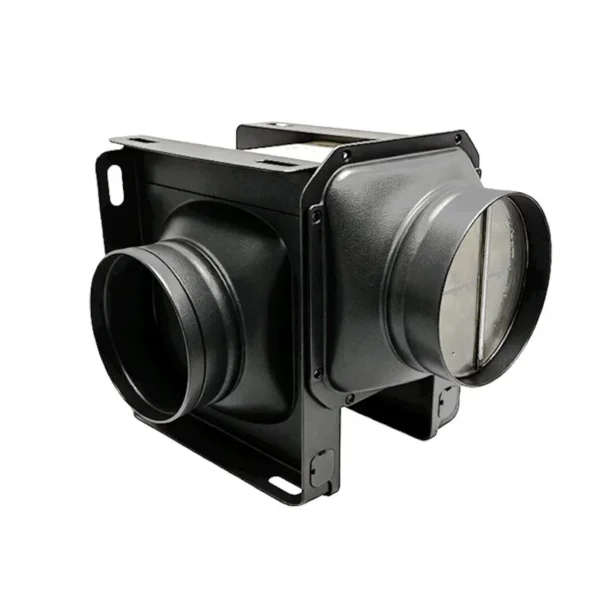
Smart Airflow Made Simple: Find Your Perfect Ventilation Fan Match
Proper ventilation is essential for a healthy, comfortable living or working space. Whether you’re dealing with stuffy air, excess humidity, cooking fumes, or poor circulation, a ventilation fan is the key to fresher air, reduced odors, and improved energy efficiency.
In this complete guide, you’ll learn:
✔ What is a ventilation fan? (Types & how they work)
✔ Top benefits of using a ventilation fan
✔ Key factors to consider before buying
✔ Best applications (Home, kitchen, bathroom, industrial)
✔ Installation & maintenance tips
What Is a Ventilation Fan?
A ventilation fan is an electrically powered device that improves airflow by extracting stale air, moisture, smoke, or pollutants and replacing it with fresh air.
Common Types of Ventilation Fans:
Exhaust Fans – Remove air from a space (e.g., bathroom fans, range hoods).
Inline Duct Fans – Boost airflow within duct systems (great for HVAC setups).
Ceiling & Wall Fans – Circulate air in large rooms or warehouses.
Energy Recovery Ventilators (ERVs) – Exchange indoor/outdoor air while retaining heat/cooling.
Attic & Whole-House Fans – Regulate temperature by venting hot air.
Top Benefits of Using a Ventilation Fan
✅ Eliminates Stale Air & Odors – Removes cooking smells, smoke, and musty air.
✅ Reduces Humidity & Prevents Mold – Critical for bathrooms, basements, and laundry rooms.
✅ Improves Indoor Air Quality (IAQ) – Filters dust, allergens, and pollutants.
✅ Enhances HVAC Efficiency – Helps regulate temperature, lowering energy costs.
✅ Prevents Condensation Damage – Protects walls, ceilings, and insulation.
How to Choose the Best Ventilation Fan
Before buying, consider these key factors:
1. Airflow Capacity (CFM – Cubic Feet per Minute)
Small rooms (bathrooms, closets) → 50-100 CFM
Kitchens & larger spaces → 150-400+ CFM
Industrial/warehouse use → 1000+ CFM
2. Noise Level (Measured in Sones or Decibels)
0.5-1.0 sones → Nearly silent (ideal for bedrooms)
2.0-4.0 sones → Standard for bathrooms & kitchens
6.0+ sones → Louder (better for workshops & garages)
3. Energy Efficiency (Look for ENERGY STAR® Ratings)
DC motors use 30-50% less energy than AC motors.
Smart fans with auto humidity sensors save power.
4. Installation Type (Wall, Ceiling, Duct, or Window Mount)
Bathroom exhaust fans → Ceiling/wall-mounted
Kitchen range hoods → Ducted or ductless
Attic & whole-house fans → Roof or gable-mounted
5. Extra Features
Humidity sensors (auto on/off)
Motion detection (for smart ventilation)
Adjustable speed settings
Best Applications for Ventilation Fans
🏠 Home Use
Bathrooms → Prevents mold & mildew (Panasonic WhisperGreen® is a top pick).
Kitchens → Removes grease & smoke (Broan-NuTone range hoods).
Basements & Laundry Rooms → Reduces dampness.
🏢 Commercial & Industrial Use
Warehouses → Keeps air fresh in large spaces.
Restaurants → Eliminates cooking fumes.
Grow Rooms & Greenhouses → Controls humidity & CO2 levels.
Installation & Maintenance Tips
✔ Hire a Pro for Complex Setups (Especially ducted systems).
✔ Clean Filters & Grilles Regularly (Prevents dust buildup).
✔ Check for Air Leaks (Seal gaps in ductwork for max efficiency).
✔ Test Monthly – Ensure the fan is working properly.
Final Verdict: Why You Need a Ventilation Fan
A ventilation fan is a must-have for healthier air, lower humidity, and better energy efficiency. Whether you need a small bathroom fan or an industrial-grade exhaust system, choosing the right model ensures long-term comfort and savings.
Ready to upgrade your airflow? Check out our [Best Ventilation Fans of 2025] guide for top-rated picks!

